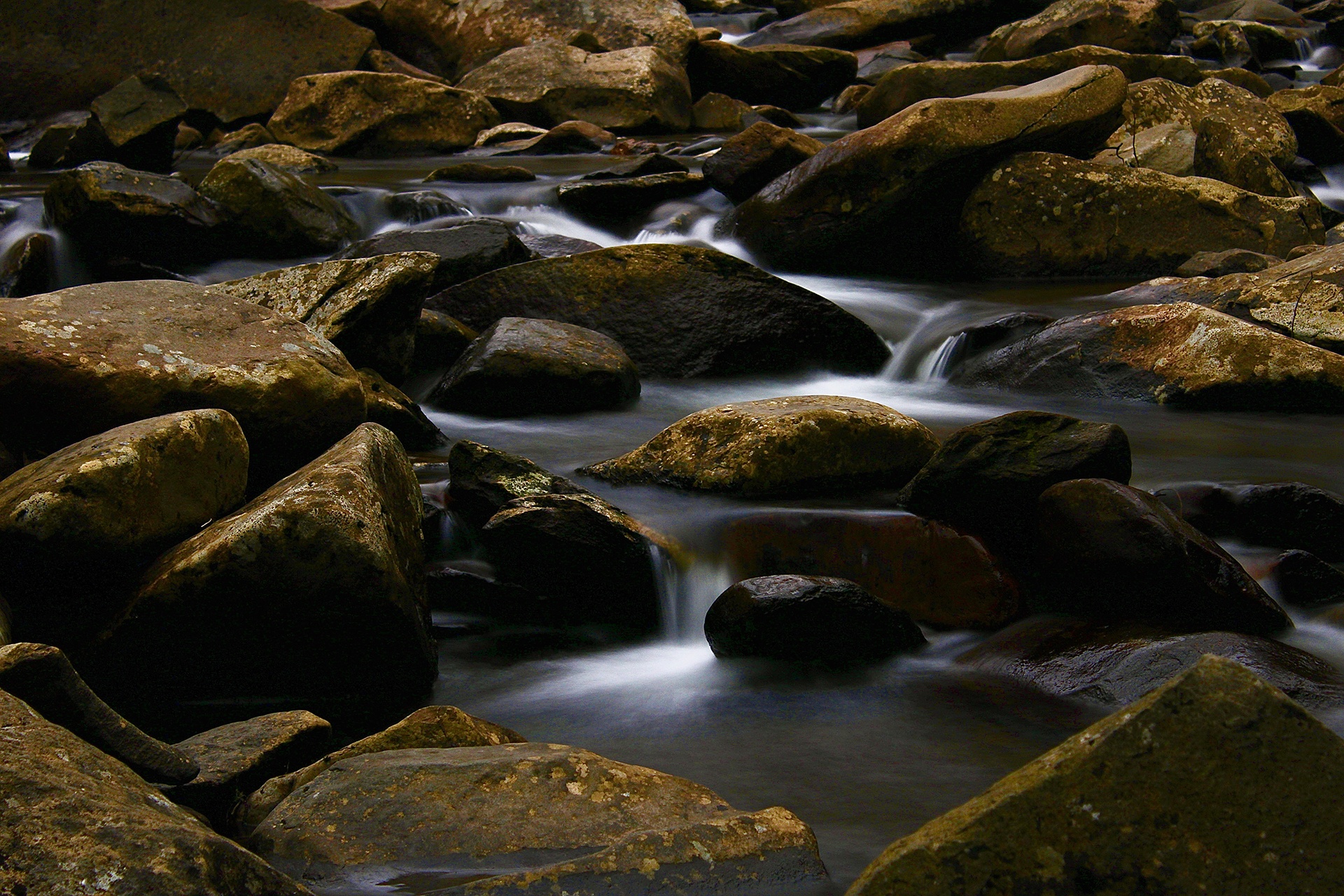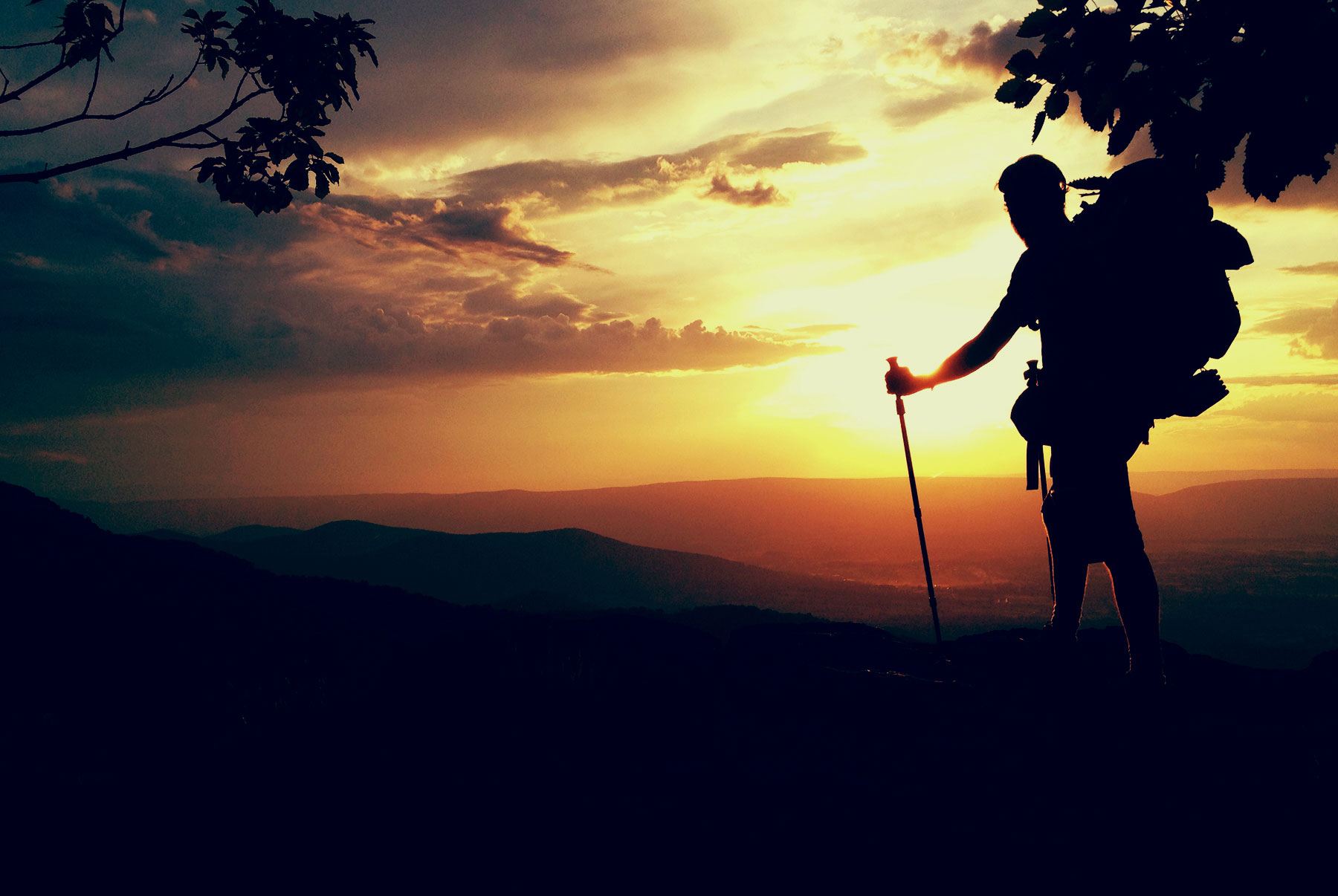By Kim O’Connell
From Advocacy to Action
July 30, 2021
Why we need to speak out on behalf of the Appalachian Trail.
At Harpers Ferry, West Virginia, the confluence of the Shenandoah and Potomac rivers is one of the most welcome sights along the Appalachian Trail (A.T.). Often referred to as the Trail’s “spiritual” or “psychological” halfway point, Harpers Ferry combines a charming and historic town with picturesque bridges and towering, tree-covered cliffs. But the scenic spot offers something else, too, something essential to the health of all creatures: the refreshing sight and sound of water.
Like mountain vistas or lush forests, clean water is an integral part of the A.T. experience. When we stop to marvel at the Shenandoah River tumbling over the Staircase Rapids at Harpers Ferry, or other stream and river crossings along the Trail, our mental well-being improves, according to scientists.
“Water is the essence of life,” writes Dr. Wallace J. Nicholls, author of Blue Mind: The Surprising Science That Shows How Being Near, In, On, or Under Water Can Make You Happier, Healthier, More Connected, and Better at What You Do. “The ocean, healthy rivers, lakes, and wetlands are good for our minds and bodies.”
Clean water is beneficial not just for us, but for the plants and animals that also depend on it. With this in mind, the Appalachian Trail Conservancy (ATC) continually works to protect the federal Clean Water Act from threats, namely an effort to curtail state and tribal oversight of infrastructure projects — such as pipelines, sewage plants, and the like — to ensure that they do not damage water quality in those jurisdictions. This oversight was a fundamental tenet of the 1972 act and one that has helped ensure that the waterways along the A.T. have remained unpolluted.

Supporting legislation like the Clean Water Act helps ensure the quality of A.T. water sources is protected. Photo by Janene Sullivan.
Protection of the Clean Water Act is just one of several advocacy efforts the Conservancy is currently engaged in, part of a coordinated effort to protect and preserve the entire Trail Corridor. Although much of the Conservancy’s work — and certainly that of Trail volunteers and that of the maintaining clubs, too — focuses on upkeeping the footpath itself, protecting the beauty and health of the Trail’s viewsheds and the surrounding A.T. landscape is equally important. Although the Trail connects several large and significant protected landscapes, the protected A.T. corridor does not routinely reach the 1,000-foot width early planners hoped to achieve. Many of the landscapes and watersheds that help create the Trail experience remain unprotected and are under increasing pressure from development, habitat destruction, and different forms of pollution.
In 1921, when Benton MacKaye envisioned a trail along the Appalachian Mountains, he wasn’t just interested in the route the path would take; he also wanted to make the trail “the backbone of a super reservation and primeval recreation ground.” MacKaye spent the next several years talking up the idea of the Trail and its myriad values to anyone who would listen, working to drum up support for his groundbreaking idea. Along with the path itself, inherent in MacKaye’s plan was the conservation of the beauty, vistas, and natural and cultural resources found all along the route. Making the Trail was merely the first step in a long advocacy effort, not the last.

“All I did was put a match to the fuse. And you folks out there did everything else for the last 50 years. That’s all there is to it. And go ahead and do it for another 50 years.” -Benton MacKaye, 1975
This has now been the work of a century. From MacKaye’s initial vision, to the determination of the optimal route, to its inclusion in the National Park System and designation as a National Scenic Trail under the 1968 National Trails System Act, the Trail has relied on an army of advocates willing to share its story and potential. The ATC has led this effort in numerous ways, helping to press Congress and forge the partnerships necessary to acquire the final parcels of the route in the 1970s, ‘80s, and ‘90s and to respond when threats arise.
“Nowadays we’ve taken more of a landscape view of conservation,” says Brendan Mysliwiec, ATC’s director of federal policy and legislation. “If we can’t protect what the Trail was established to celebrate — the natural, scenic, and cultural resources of the Appalachian Mountain range — then there really is no Trail to protect itself.”
Today, the threats the ATC is responding to feel ever more pressing, including the climate crisis, forest fragmentation, encroaching development, and the weakening of bedrock environmental laws like the Clean Water Act. The ATC also promotes conservation legislation that affects the entirety of the Trail and the federal and state public lands systems it is a part of. The ATC’s support for permanent, full funding for the Land and Water Conservation Fund, for example, achieved with the enactment of 2020’s Great American Outdoors Act, represents just one of the many conservation victories that will help protect the Trail corridor for years to come.
“Our purpose is to bring people together to appreciate the resource,” says Mysliwiec. “It’s to bring people together to understand and act on the belief that volunteerism is essential to maintaining our public lands and that we are all stewards. We all have some degree of responsibility to make sure that the natural, cultural, and scenic resources of the Appalachian Mountains are protected forever for all to enjoy.”
Anyone who uses and loves the Trail can be an important voice for its stewardship. This can mean calling Members of Congress or sending them emails about issues relevant to the Trail and surrounding A.T. Landscape. It can mean joining lobby days in Washington, D.C., or organizing locally. But it can also mean writing letters to the editor or op-eds, or giving a brown-bag lunch talk at your local library. It can mean sharing stories about the Trail on social media or inviting friends to join you on a volunteer maintenance project.

In addition to speaking and writing about the Trail, Lauralee Bliss advocated for the A.T. through her multi-year role as a ridgerunner in Maryland and Shenandoah National Park. Photo by Jim Fetig.
In the case of Lauralee Bliss, a two-time thru-hiker, avid public speaker, and writer about the A.T., she was moved to advocate for the Trail by working as a ridgerunner for six years in Maryland and Shenandoah National Park in Virginia.
“After hiking the Appalachian Trail north and south, I realized I wanted to give back not only to the hikers by sharing the information I gleaned from hiking, but also protecting the Trail from the impacts of increased visitation,” Bliss says. “When you are out on the Trail, you can see how people disregard Leave No Trace principles, and I felt this was a way to preserve the wilderness experience for everyone. The experience allowed me to share my love of the Trail while teaching others how to preserve it.”
Whether we simply talk to our neighbors or walk the halls of Congress, we can all do our part to take action for the Trail. It can be especially powerful when Trail volunteers and members of the 31 maintaining clubs speak out on its behalf. Stories of the transformational experiences people have had on the Trail — whether working to clear the path of debris or remove invasive species, or simply stopping to marvel at places like the Staircase Rapids — help to convey how important it is to protect not just the Trail, but the many magnificent places it takes us.
 Kim O’Connell writes about science, history, conservation and sustainability for a range of national publications. She has served as a writer-in-residence at Acadia and Shenandoah National Parks and teaches in the Johns Hopkins University Master’s in Science Writing program. Learn more: kimaoconnell.com.
Kim O’Connell writes about science, history, conservation and sustainability for a range of national publications. She has served as a writer-in-residence at Acadia and Shenandoah National Parks and teaches in the Johns Hopkins University Master’s in Science Writing program. Learn more: kimaoconnell.com.

